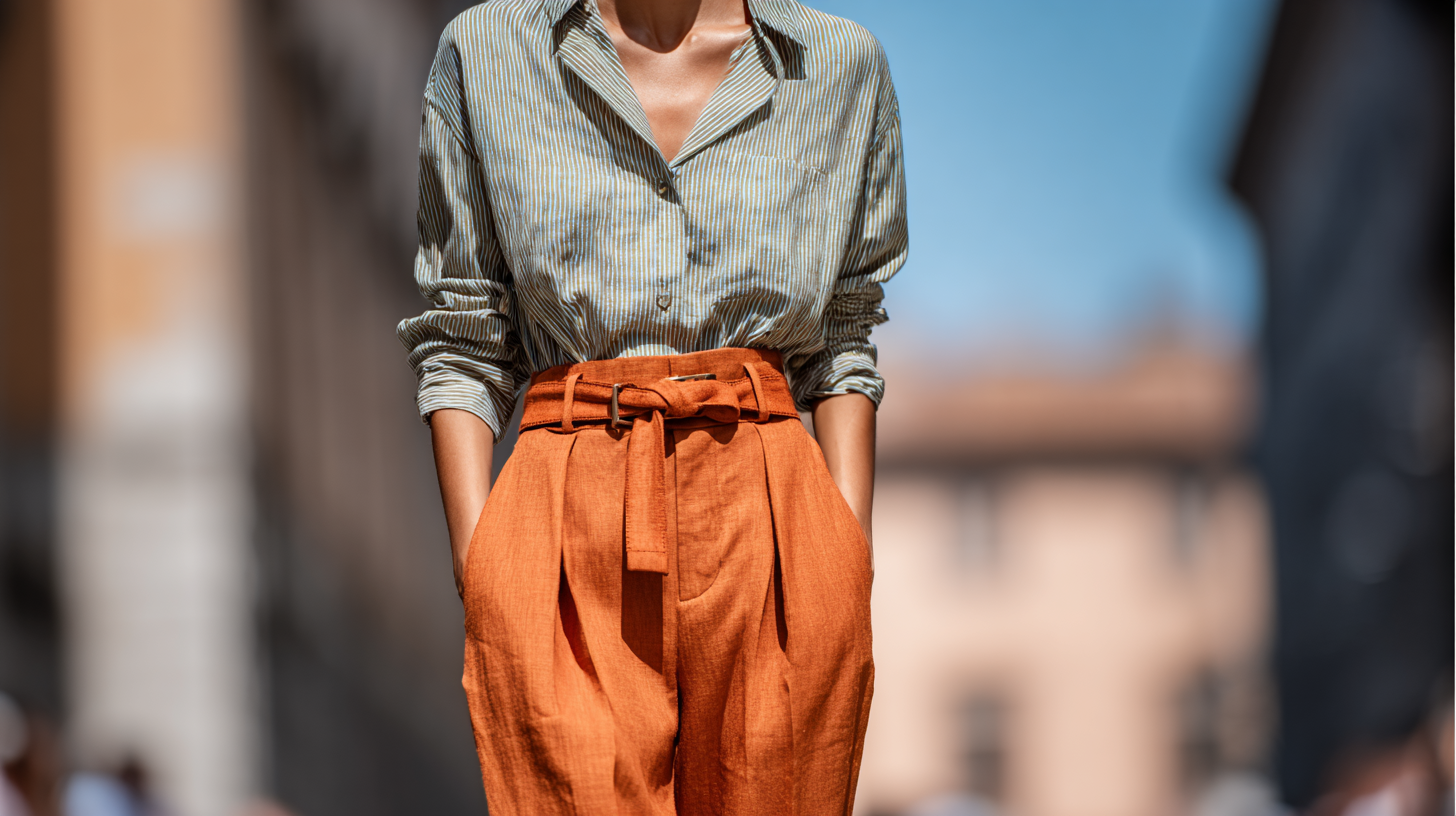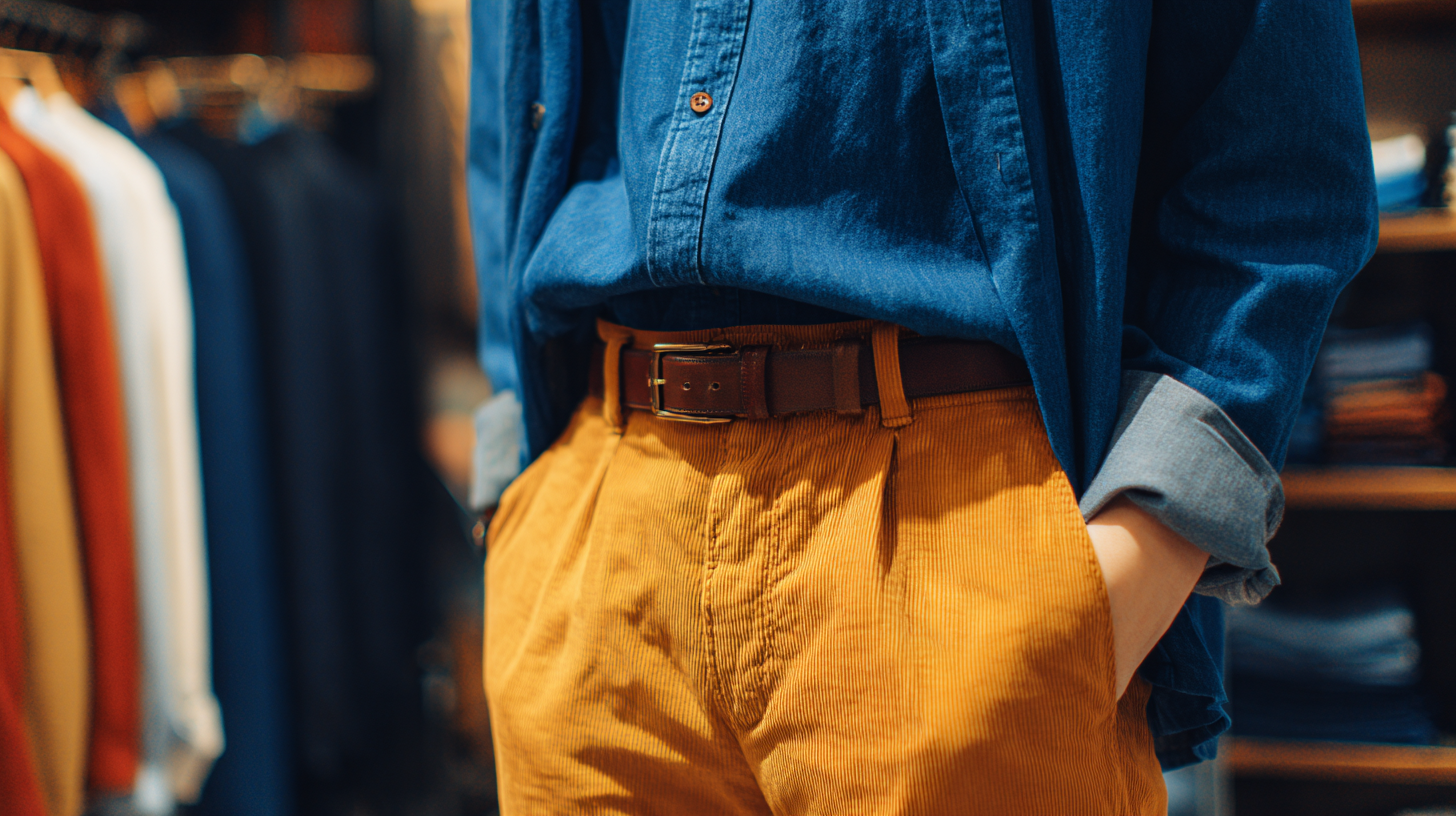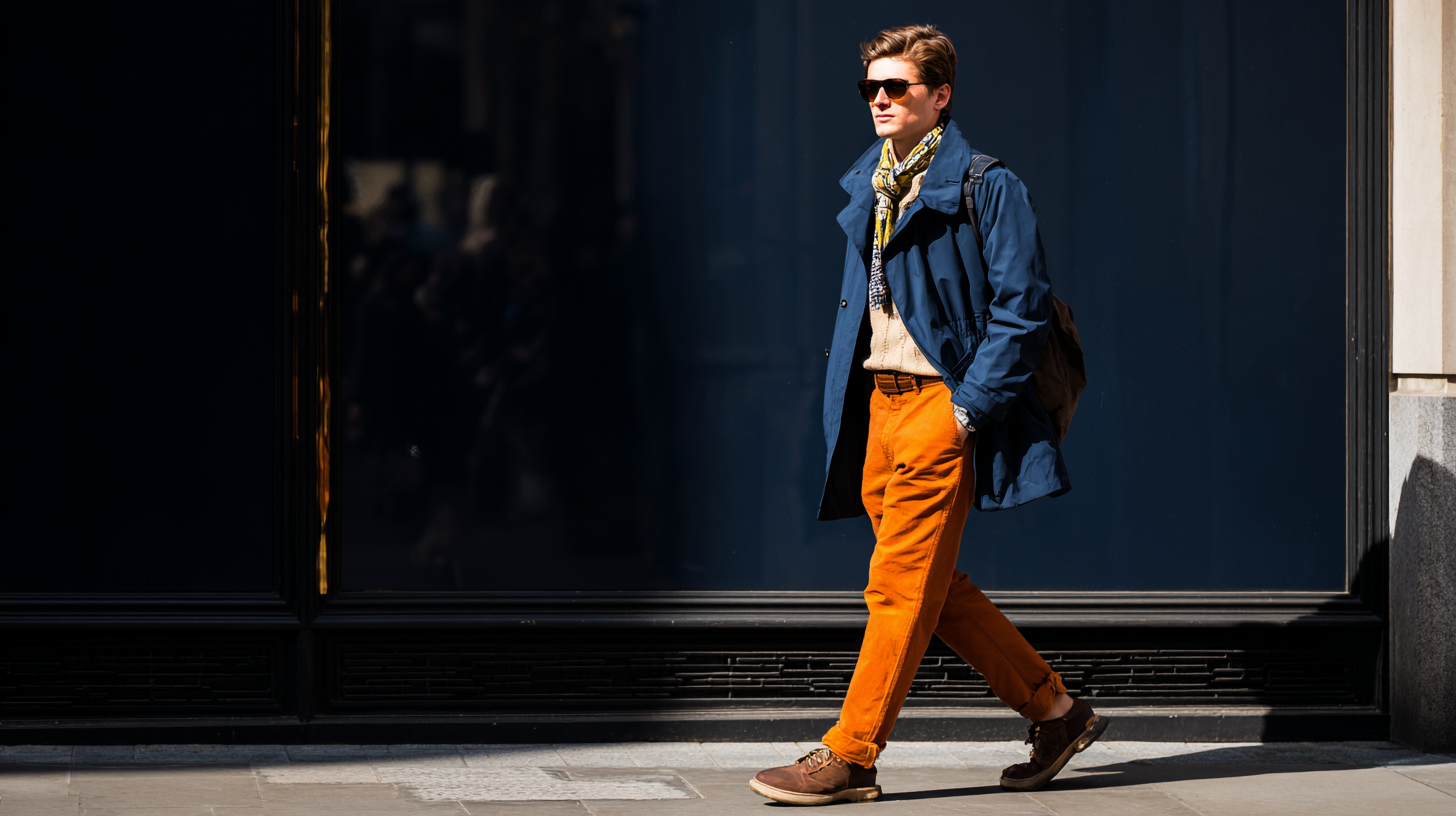Welcome to the TopShow!Garment manufacturing !
OEM, ODM Service,Custom color Custom logo,Custom Your Own Brand Online!
Welcome to the TopShow!Garment manufacturing !
OEM, ODM Service,Custom color Custom logo,Custom Your Own Brand Online!
As we step into 2025, the realm of casual trousers continues to transform, offering a myriad of innovative designs and solutions that cater to the ever-evolving needs of global buyers. With a growing emphasis on both comfort and style, contemporary casual trousers are not just simple wardrobe staples, but are becoming essential pieces that embody personal expression and practicality. In this blog, we will explore the multifaceted landscape of best casual trousers available today, highlighting the digital tools and trends that make shopping effortless and efficient. From sustainable fabrics to smart technologies, we aim to provide compelling reasons why investing in the right pair of casual trousers is crucial in today’s fashion-forward world. Join us as we navigate this dynamic market and uncover the latest innovations that are reshaping how we approach casual wear in our daily lives.

The fashion industry is experiencing a significant shift towards sustainability, with casual trousers at the forefront of this transformation. According to the Textile Exchange’s “Material Change Index,” sustainable fiber usage in the global textile market increased by 21% from 2018 to 2021, and this trend is projected to continue. As consumer awareness heightens regarding the environmental impact of textiles, brands are prioritizing eco-friendly materials such as organic cotton, Tencel, and recycled polyester. This shift not only appeals to environmentally-conscious buyers but also enhances brand loyalty in an increasingly competitive market.

Innovative production techniques are further driving this change. The incorporation of sustainable practices, such as waterless dyeing and efficient manufacturing processes, not only reduces water consumption by up to 90% but also lowers carbon emissions. A report from McKinsey highlights that by 2030, the fashion industry could reduce greenhouse gas emissions by up to 1.1 billion metric tons through the adoption of sustainable practices. As manufacturers adapt to these innovative solutions, the landscape of casual trousers will evolve, offering consumers stylish options that align with their values while promoting a more sustainable future for the fashion industry.
The casual trousers market is poised for significant growth in 2025, reflecting broader trends across the apparel industry. According to recent projections, the global women's trousers market, valued at approximately $249.57 billion in 2024, is expected to increase to around $261.45 billion in 2025, ultimately reaching $379.27 billion by 2033. This growth trajectory underscores the increasing consumer demand for stylish and versatile trousers that seamlessly blend comfort with fashion.
In parallel, the Japan sports apparel market, a critical segment of the casual wear industry, is projected to expand from $10.58 billion in 2025 to $15.17 billion by 2032, growing at a compound annual growth rate (CAGR) of 5.28%. This upward trend is likely fueled by an increased focus on active lifestyles and athleisure wear, which continues to gain traction among consumers seeking durability and style. As brands adapt to these evolving preferences, innovative solutions will emerge, enabling global buyers to navigate this dynamic market effectively.
| Region | Market Size (Million USD) | Growth Rate (%) | Key Trends |
|---|---|---|---|
| North America | 5,200 | 4.5 | Eco-friendly fabrics, Athleisure integration |
| Europe | 6,800 | 5.2 | Sustainable brands, Customizable options |
| Asia-Pacific | 4,300 | 6.0 | Traditional meets modern, Tech integration |
| Latin America | 1,200 | 3.8 | Cultural styles, Affordable luxury |
| Middle East & Africa | 900 | 5.0 | Luxury fabrics, Versatility in designs |
As the global demand for casual trousers surges, China's manufacturing sector continues to innovate, setting the stage for an exciting evolution in fashion exports. Leveraging advanced technology and sustainable practices, Chinese manufacturers are redefining production processes to meet the diverse needs of global buyers. From the integration of smart textiles to the use of eco-friendly materials, these innovations not only enhance product quality but also align with the growing demand for sustainability in the apparel industry.
One notable development is the adoption of automation and artificial intelligence in factories, streamlining operations and increasing efficiency. This shift allows for more precise tailoring and quicker turnaround times, enabling brands to respond swiftly to changing trends and customer preferences. Additionally, China's investment in research and development has led to the creation of multifunctional garments that combine comfort with style, appealing to a broad spectrum of consumers. As global buyers navigate the ever-evolving landscape of casual trousers, China's manufacturing edge remains pivotal in driving not just exports, but the future of fashion itself.
As we navigate the evolving landscape of casual trousers in 2025, understanding consumer preferences has become paramount for global buyers. Recent reports indicate that approximately 67% of consumers are now prioritizing comfort and versatility in their casual wear choices. This shift reflects a growing trend where traditional styles are being redefined to meet the demands of modern lifestyles—where remote work and casual engagements dominate daily routines.
Moreover, sustainability is at the forefront of consumer minds, with 54% of buyers indicating they prefer brands that utilize eco-friendly materials. Innovations in fabric technology, such as the use of recycled polyester and organic cotton, are becoming crucial for attracting environmentally conscious shoppers. These preferences illustrate a clear direction for manufacturers and retailers who need to adapt their offerings to incorporate not only style but also ethical considerations and eco-awareness in their production processes.
As we step into 2025, the production of casual trousers has undergone a significant transformation, driven by cutting-edge technological advancements. These innovations not only enhance the quality of the materials used but also streamline the manufacturing process, resulting in more efficient production cycles. With new fabric technologies, manufacturers can now create trousers that are not only comfortable but also durable and resistant to wear and tear. This shift is vital for global buyers seeking both style and longevity in their casual wear.

Tip: When selecting casual trousers, look for those made from sustainable materials that leverage technological advancements. Fabrics like organic cotton and recycled polyester not only minimize environmental impact but also enhance comfort and durability.
Furthermore, automation in production facilities has led to increased precision in crafting trousers, ensuring consistent sizing and fit. Advanced stitching techniques and the use of artificial intelligence in design and quality control have markedly improved the final product. Buyers can now benefit from trousers that fit better and last longer, addressing common concerns in the past regarding fit and longevity.
Tip: Always check for brand transparency regarding their production processes. Brands embracing technology often share insights about their manufacturing practices, which can guide you in making informed purchasing decisions.
